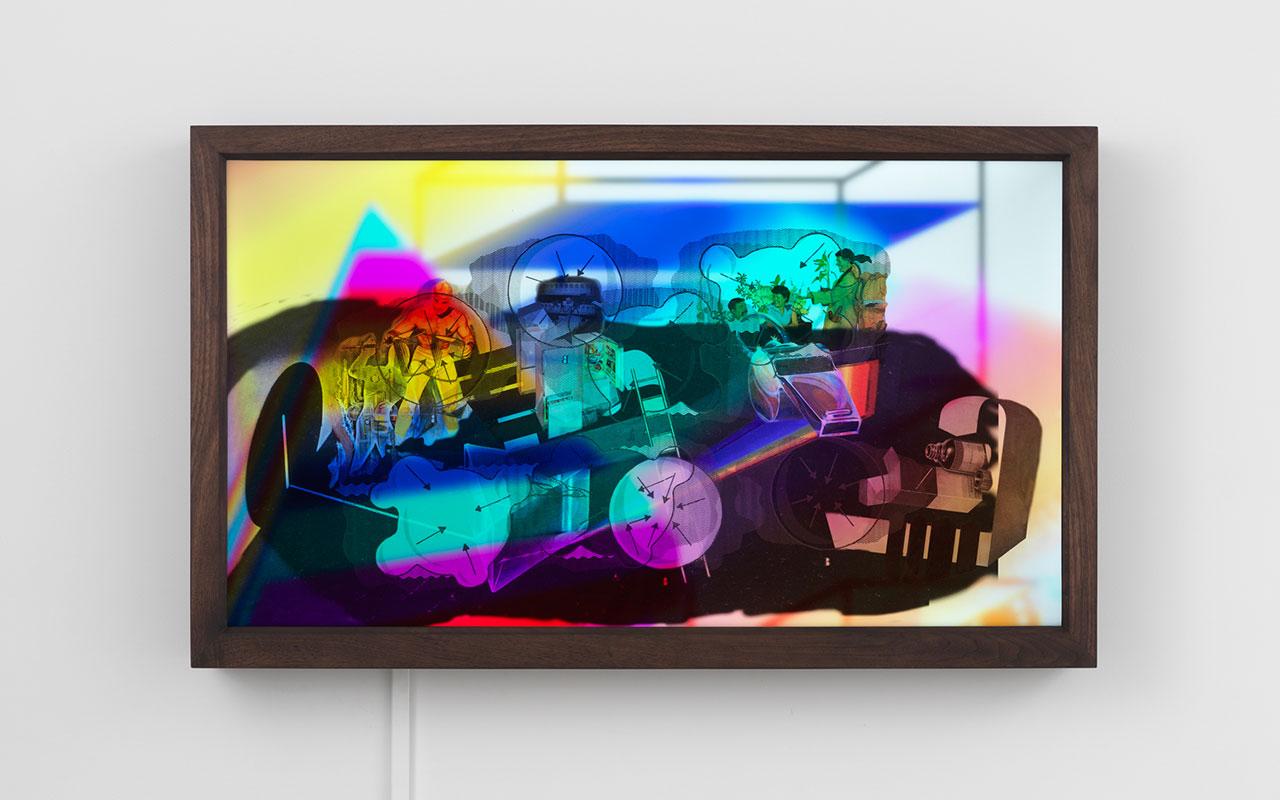Jibade-Khalil Huffman Thinks a Picture Speaks a Thousand Words
Diverging from filmic poetry, at Magenta Plains, New York, the artist presents a new body of work without his usual smattering of textual imagery
Diverging from filmic poetry, at Magenta Plains, New York, the artist presents a new body of work without his usual smattering of textual imagery

The 20th-century film scholar P. Adams Sitney noted, in an introduction to the second edition of his landmark volume Visionary Film: The American Avant-Garde 1943–1978 (1979), that moving pictures made and distributed outside of commercial film production were once called ‘film poems’. The term seems appropriate to describe Jibade-Khalil Huffman’s artistic practice, given the several books of poetry he’s published over the past dozen years and his penchant for incorporating text into his films. Both his arresting 2018 installation at The Kitchen in New York (Tempo) and a recent presentation of his incredible feature-length video ZERO (2020) at the Swiss Institute contiguously employed subtitles, music and omniscient voice-overs to expand upon a surfeit of oblique commercial and DIY imagery from the digital sphere.

Writing is fully inextricable from contemporary art and part of Huffman’s brilliance lies in collating drifts of digital media and blasting through their banality with targeted shots from his own literature. It was disappointing, then, to find he had abandoned this approach for ‘Total Running Time’, his first solo exhibition at Magenta Plains: an installation of video projections, photographic light boxes and photo collages. Pieces such as Untitled (Explosion) (all works 2020) are undeniably visually appealing: abstract patterns projected onto an inkjet print already exploding with markings and images further rebound on a facing wall in a beautiful display of light and colour. But the piece’s appeal is muted for viewers who have seen Huffman’s odd, shattering phrasings scroll across similar surfaces in earlier works.
In one such moment from ZERO, for instance, footage of cars flipping on a highway segues into swirling diagrams while the subtitles lament all that fentanyl-laced cocaine going around: ‘which is a shame for a number of reasons not the least of which is because cocaine is a nectar in the pattern of my anxiety’. A calmly verbose, even humdrum tone paired with totally grandiose or otherwise unprovable claims is a recurring tactic in Huffman’s practice.

By comparison, the works in ‘Total Running Time’ appear more at ease in their situation. In A Void, a flatscreen television and lightbox composite displays a looped video in which neon rings spiral outwards from the work’s central image of a cluster of schema and action figures, while audio clips feature a muffled debate about whether the moon is a planet or a star. The narratives in Huffman’s work often occupy the realm of shaggy-dog stories: building on and on until it becomes clear that the tale is meant not to cohere but to gracefully unravel. That ever-circling momentum is absent from the works in ‘Total Running Time’, however: what of the splitting of the difference between the planets and the stars? The question is left hanging.

Downstairs sits Where There’s Smoke: a large-scale, three-channel video installation projected onto transparent inkjet prints that offers quietly engaging shimmering and shifting patterns. Here, the artist appears to be exploring the essential nature of cinema, or what filmmaker Jack Smith defined in Film Culture (Winter 1962–63) as ‘the primitive allure of movies [as] a thing of light and shadows’. The result, however, resembles something closer to the ambient viewing experience of a psychedelic light show or a television left switched-on in the background. I’ll await Huffman’s next turn.
Jibade-Khalil Huffman's 'Total Running Time' is on view at Magenta Plains, New York, until 16 December 2020.
Main image: Jibade-Khalil Huffman, 'Total Running Time', 2020, exhibition view, Magenta Plains, New York. Courtesy: the artist and Magenta Plains, New York





















